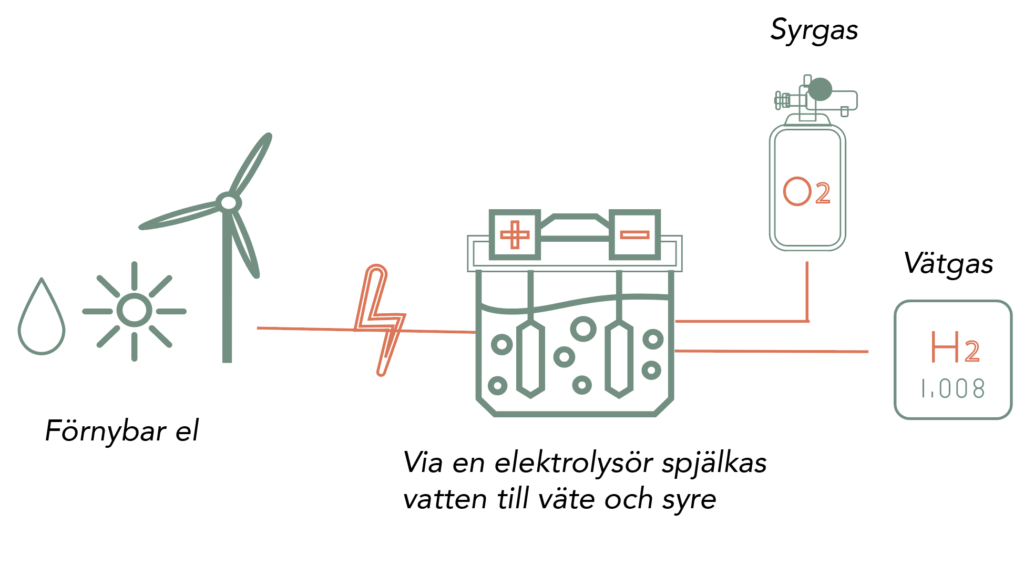Hydrogen can be produced by electrolysis from renewable electricity that splits water, from reforming fossil fuels (natural gas, coal), biomass (solid biofuel, organic waste, biogas) or gasification.
Electrolysis
Electricity is converted into hydrogen with the help of water which is split into hydrogen and oxygen, so-called electrolysis. The process is well established and has been used for over a hundred years in the industry. Thanks to research and development and economies of scale, the prices of the electrolysers are expected to drop and efficiency increase. An electrolyser can produce hydrogen when electricity is abundant and lower the production when there is less electricity available. In this way, among other things, the electricity grid is balanced, but there are also other grid benefits that can be achieved. In the electrolysis process, oxygen is created, which can for example be used in industry or healthcare. The amount of renewable hydrogen that can be produced with electrolysis is limited by the amount of renewable electricity that can be produced. In Sweden, we have plenty of renewable energy. Today, there are essentially three different electrolysis techniques for the production of hydrogen from water: alkaline electrolysis (ALK), electrolysis with proton exchange membranes (PEM) and high-temperature electrolysis (SOEC), of which the first two are available on an industrial scale on the commercial market.
Reforming
Methane in the form of natural gas or biogas is converted into hydrogen in a process called reforming. In the process, hot water vapor is mixed with gas in a reactor with a catalyst, which splits the methane into hydrogen and carbon monoxide. In the next step, the carbon monoxide and water in the steam are converted into additional hydrogen and carbon dioxide. The amount of renewable hydrogen that can be produced through reforming is limited by the amount of biogas available.
Gasification
Gasification converts carbonaceous material into gas under high pressure and high temperature. There are several different processes, but what they have in common is that the product becomes hydrogen and/or methane as well as carbon dioxide or carbon in solid form. The amount of renewable hydrogen that can be produced through gasification is limited by the amount of biomass that is available.

Green hydrogen
Hydrogen is green if the electricity comes from renewable energy sources such as water, sun or wind. It is the green hydrogen that Vätgas Sverige is referring to.
















